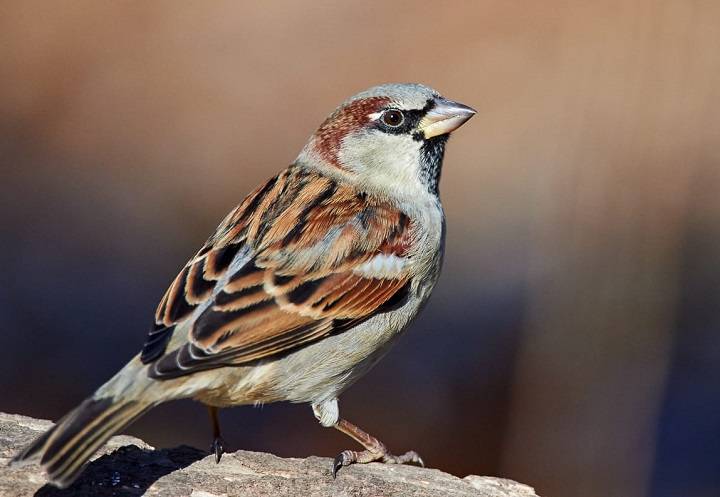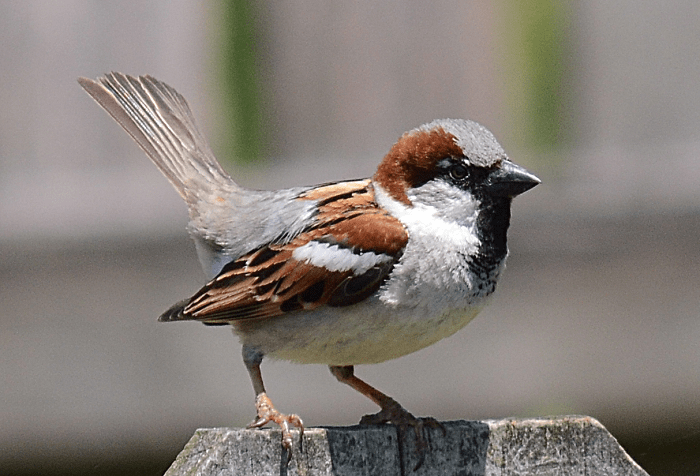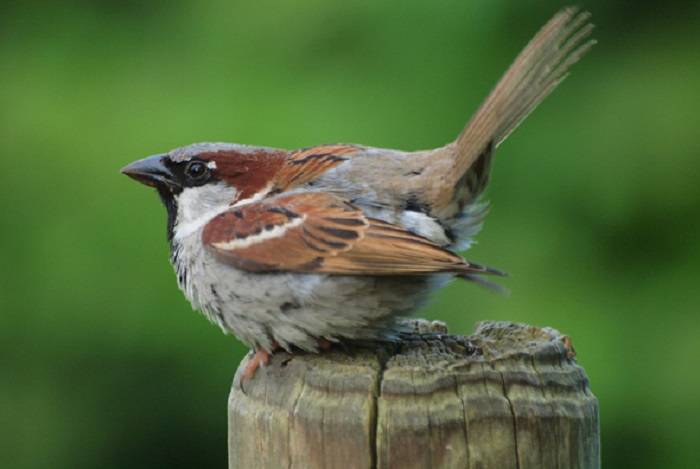The House Sparrow (Passer domesticus) holds a special place in the hearts of many Britons as one of the most familiar and beloved garden birds in the United Kingdom. With its cheerful chirps, bustling behavior, and distinctive plumage, the House Sparrow is a delightful presence in urban, suburban, and rural landscapes alike. In this comprehensive guide, we will explore the fascinating world of the House Sparrow, delving into its habitat preferences, intriguing behaviors, and the role it plays in British culture and ecology.
Habitat and Distribution
Urban Dwellers:
House Sparrows are well-adapted to human-modified landscapes and are commonly found in urban and suburban areas, where they take advantage of food sources and nesting sites provided by human habitation.
Rural Residents:
While House Sparrows are often associated with urban environments, they also inhabit agricultural areas, farmland, and rural villages, where they forage for seeds and insects in hedgerows, fields, and barnyards.
Global Range:
Originally native to Europe and Asia, House Sparrows have been introduced to many parts of the world, including North America, Australia, and South Africa, where they have established thriving populations.
Physical Characteristics
Distinctive Plumage:
Male House Sparrows are adorned with bold black markings on their wings and a gray crown, while females have more subdued plumage with brown streaks and a pale eye stripe.
Size and Shape:
House Sparrows are small, chunky birds, measuring around 14 centimeters in length and weighing approximately 25 to 30 grams. They have short, conical bills and strong legs, which they use for hopping and foraging on the ground.
Foraging Behavior
Seed-Eaters:
House Sparrows are primarily granivorous, feeding on a variety of seeds, grains, and cereals, including those found in bird feeders, agricultural fields, and garden plants.
Insectivorous Opportunists:
In addition to seeds, House Sparrows also consume a wide range of insects and invertebrates, especially during the breeding season when they need protein-rich food to feed their young.
Breeding and Nesting
Colonial Nesters:
House Sparrows are colonial breeders, nesting in loose colonies in buildings, roof spaces, hedges, and dense vegetation, where they construct domed nests made of twigs, grass, and other plant materials.
Frequent Breeders:
House Sparrows are prolific breeders, producing multiple broods each breeding season, with females laying clutches of four to six eggs, which are incubated for approximately 10 to 14 days before hatching.
Vocalizations and Calls
Chirps and Chatter:
House Sparrows are known for their cheerful chirps and chattering calls, which they use to communicate with each other, establish territory boundaries, and coordinate group activities.
Social Signals:
In addition to vocalizations, House Sparrows also use a variety of visual displays, such as head-bobbing, wing-fluttering, and bill-raising, to convey social signals and establish dominance within the flock.
Cultural Significance
Literary References:
House Sparrows have long captured the imagination of writers and poets, featuring prominently in literature and poetry as symbols of familiarity, resilience, and everyday life.
Endearing House Sparrow
Folklore and Superstition:
In folklore and superstition, House Sparrows have been associated with various beliefs and omens, with some cultures viewing them as symbols of good luck and others as harbingers of bad fortune.
Conservation Status and Threats
Population Declines:
While House Sparrows remain widespread and abundant in many parts of the UK, they have experienced significant population declines in urban and suburban areas in recent decades, largely due to habitat loss, pollution, and changes in agricultural practices.
Urbanization:
The expansion of urban areas and the loss of green spaces have contributed to the decline of House Sparrow populations, as they rely on a mix of natural and man-made habitats for foraging, nesting, and roosting.
Conservation Efforts
Habitat Enhancement:
Conservation organizations and local authorities are working to enhance urban green spaces, create wildlife-friendly gardens, and provide nesting sites and food sources for House Sparrows to support their recovery.
Community Engagement:
Citizen science projects, educational programs, and community initiatives are raising awareness about the importance of preserving biodiversity in urban environments and encouraging people to take action to protect House Sparrows and other garden birds.
Related Post:
Just Birding: A Celebration of Avian Wonders
Unveiling the Enigmatic Hoopoe: A Fascinating Journey into the Avian World
Discovering the Enchanting Endemic Birds of Hawaii
In conclusion, the House Sparrow is a beloved and iconic bird species that adds joy and vitality to the urban and rural landscapes of the United Kingdom. By appreciating their resilience, adaptability, and cultural significance, we can work together to conserve and protect House Sparrows for future generations to enjoy. With habitat restoration, public engagement, and conservation efforts, we can ensure that House Sparrows continue to thrive and flourish in our gardens, parks, and communities for years to come.




